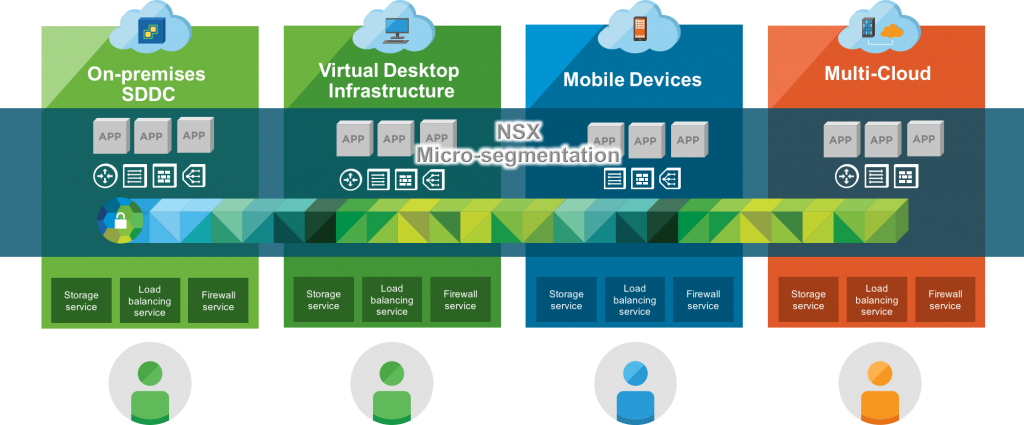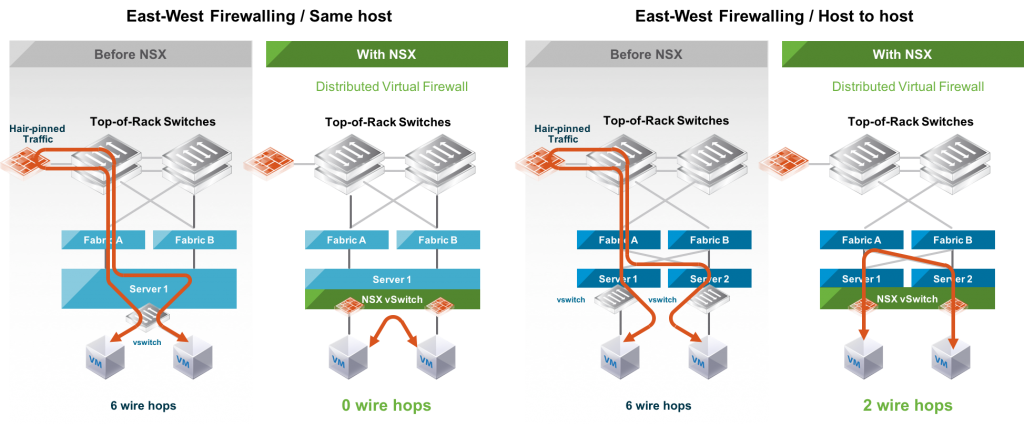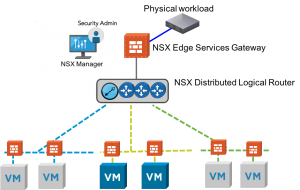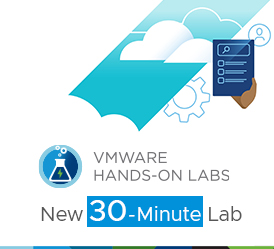The landscape of the modern data center is rapidly evolving. The migration from physical to virtualized workloads, move towards software-defined data centers, advent of a multi-cloud landscape, proliferation of mobile devices accessing the corporate data center, and adoption of new architectural and deployment models such as microservices and containers has assured the only constant in modern data center evolution is the quest for higher levels of agility and service efficiency. This march forward is not without peril as security often ends up being an afterthought. The operational dexterity achieved through the ability to rapidly deploy new applications overtakes the ability of traditional networking and security controls to maintain an acceptable security posture for those application workloads. That is in addition to a fundamental problem of traditionally structured security not working adequately in more conventional and static data centers.
Without a flexible approach to risk management, which adapts to the onset of new technology paradigms, security silos using disparate approaches are created. These silos act as control islands, making it difficult to apply risk-focused predictability into your corporate security posture, causing unforeseen risks to be realized. These actualized risks cause an organization’s attack surface to grow as the adoption of new compute technology increases, causing susceptibility to increasing advanced threat actors.
Micro-segmentation Anywhere with VMware NSX
A foundational aspect of solving this problem is the ability to implement micro-segmentation anywhere. VMware NSX is a networking and security platform able to deliver micro-segmentation across all the evolving components comprising the modern data center. NSX based micro-segmentation enables you to increase the agility and efficiency of your data center while maintaining an acceptable security posture. The following blog series will define the necessary characteristics of micro-segmentation as needed to provide effective security controls within the modern data center and demonstrate how NSX goes beyond the automation of legacy security paradigms in enabling security through micro-segmentation.
Acceptable Security in the Modern Data Center
It is no longer acceptable to utilize the traditional approach to data-center network security built around a very strong perimeter defense but virtually no protection inside the perimeter. This model offers very little protection against the most common and costly attacks occurring against organizations today, which include attack vectors originating within the perimeter. These attacks infiltrate your perimeter, learn your internal infrastructure, and laterally spread through your data center.
The ideal solution to complete data center protection is to protect every traffic flow inside the data center with a firewall and only allow the flows required for applications to function. This is also known as the Zero Trust model. Achieving this level of protection and granularity with a traditional firewall is operationally unfeasible and cost prohibitive, as it would require traffic to be hair-pinned to a central firewall and virtual machines to be placed on individual VLANs (also known as pools of security).
A typical 1 Rack-Unit top-of-rack data center switch performs at approximately 2Tbps while the most advanced physical firewall performs at 200Gbps in 19 Rack-Unit physical appliances, providing 10% the usable bandwidth. Imagine the network resource utilization bottlenecks created by having to send all east-to-west communication from every VM to every other VM through a physical firewall and how quickly you would run out of available VLANs (limited to 4096) to segment workloads into application-centric pools of security. This is a fundamental architectural constraint created by traditional security architecture that hampers the ability to maintain an adequate security posture within a modern datac enter.
Defining Micro-segmentation
Micro-segmentation decreases the level of risk and increases the security posture of the modern data center. So what exactly defines micro-segmentation? For a solution to provide micro-segmentation requires a combination of the following capabilities, enabling the ability to achieve the below-noted outcomes.
- Distributed stateful firewalling for topology agnostic segmentation – Reducing the attack surface within the data center perimeter through distributed stateful firewalling and ALGs (Application Level Gateway) on a per-workload granularity regardless of the underlying L2 network topology (i.e. possible on either logical network overlays or underlying VLANs).
- Centralized ubiquitous policy control of distributed services – Enabling the ability to programmatically create and provision security policy through a RESTful API or integrated cloud management platform (CMP).
- Granular unit-level controls implemented by high-level policy objects – Enabling the ability to utilize security groups for object-based policy application, creating granular application level controls not dependent on network constructs (i.e. security groups can use dynamic constructs such as OS type, VM name or static constructs such active directory groups, logical switches, VMs, port groups IPsets, etc.). Each application can now have its own security perimeter without relying on VLANs . See the DFW Policy Rules Whitepaper for more information.
- Network overlay based isolation and segmentation – Logical Network overlay-based isolation and segmentation that can span across racks or data centers regardless of the underlying network hardware, enabling centrally managed multi-datacenter security policy with up to 16 million overlay-based segments per fabric.
- Policy-driven unit-level service insertion and traffic steering – Enabling Integration with 3rd party solutions for advanced IDS/IPS and guest introspection capabilities.
Alignment with Emerging Cyber Security Standards
National Institute of Standards and Technology (NIST) is the US federal technology agency that works with industry to develop and apply technology, measurements, and standards. NIST is working with standards bodies globally in driving forward the creation of international cybersecurity standards. NIST recently published NIST Special Publication 800-125B, “Secure Virtual Network Configuration for Virtual Machine (VM) Protection” to provide recommendations for securing virtualized workloads. The capabilities of micro-segmentation provided by NSX map directly to the recommendations made by NIST.
Section 4.4 of NIST 800-125b makes four recommendations for protecting virtual machine workloads within modern data center architecture. These recommendations are as follows
- VM-FW-R1: In virtualized environments with VMs running delay-sensitive applications, virtual firewalls should be deployed for traffic flow control instead of physical firewalls, because in the latter case, there is latency involved in routing the virtual network traffic outside the virtualized host and back into the virtual network.
- VM-FW-R2: In virtualized environments with VMs running I/O intensive applications, kernel-based virtual firewalls should be deployed instead of subnet-level virtual firewalls, since kernel-based virtual firewalls perform packet processing in the kernel of the hypervisor at native hardware speeds.
- VM-FW-R3: For both subnet-level and kernel-based virtual firewalls, it is preferable if the firewall is integrated with a virtualization management platform rather than being accessible only through a standalone console. The former will enable easier provisioning of uniform firewall rules to multiple firewall instances, thus reducing the chances of configuration errors.
- VM-FW-R4: For both subnet-level and kernel-based virtual firewalls, it is preferable that the firewall supports rules using higher-level components or abstractions (e.g., security group) in addition to the basic 5-tuple (source/destination IP address, source/destination ports, protocol).

NSX based micro-segmentation meets the NIST VM-FW-R1, VM-FW-R2 and VM-FW-R3 recommendations in providing the ability to utilize network virtualization based overlays for isolation, and distributed kernel based firewalling for segmentation through ubiquitous centrally managed policy control which can be fully API driven.
Micro-segmentation through NSX also meets the NIST VM-FW-R4 recommendation to utilize higher-level components or abstractions (e.g., security groups) in addition to the basic 5-tuple (source/destination IP address, source/destination ports, protocol) for firewalling. NSX based micro-segmentation can be defined as granularly as a single application or as broad as a data center, with controls that can be implemented by attributes such as who you are or what device is accessing your data center.
Micro-segmentation with NSX as a Security Platform
Protection against advanced persistent threats that propagate via targeted users and application vulnerabilities presents a requirement for more than network layer segmentation to maintain an adequate security posture. These advanced threats require application-level security controls such as application-level intrusion protection or advanced malware protection to protect chosen workloads. In being a security platform, NSX based micro-segmentation goes beyond the recommendations noted in the NIST publication and enables the ability for fine-grained application of service insertion (e.g. allowing IPS services to be applied to flows between assets that are part of a PCI zone). In a traditional network environment, traffic steering is an all or none proposition, requiring all traffic to steered through additional devices. With micro-segmentation, advanced services are granularly applied where they are most effective, as close to the application as possible in a distributed manner while residing in separate trust zone outside the application’s attack surface.
Securing Physical Workloads
While new workload provisioning is dominated by agile compute technologies such as virtualization and cloud, the security posture of physical workloads still has to be maintained. NSX has the security of physical workloads covered as physical to virtual or virtual to physical communication can be enforced using distributed firewall rules at ingress or egress. In addition, for physical to physical communication NSX can tie automated security of physical workloads into micro-segmentation through centralized policy control of those physical workloads through the NSX Edge Service Gateway or integration with physical firewall appliances. This allows centralized policy management of your static physical environment in addition to your micro-segmented virtualized environment.
Conclusion
NSX is the means to provide micro-segmentation through centralized policy controls, distributed stateful firewalling, overlay- based isolation, and service-chaining of partner services to address the security needs of the rapidly evolving information technology landscape. NSX easily meets and goes above and beyond the recommendations made by the National Institute of Standards and Technology for protecting virtualized workloads, secures physical workloads, and paves a path towards securing future workloads with a platform that meets your security needs today and is flexible enough to adapt to your needs tomorrow.
As we continue this multi-part series on micro-segmentation, we will continue to delve into deeper aspects of how NSX micro-segmentation will increase the security posture of your organization with the following upcoming topics.










Comments
0 Comments have been added so far